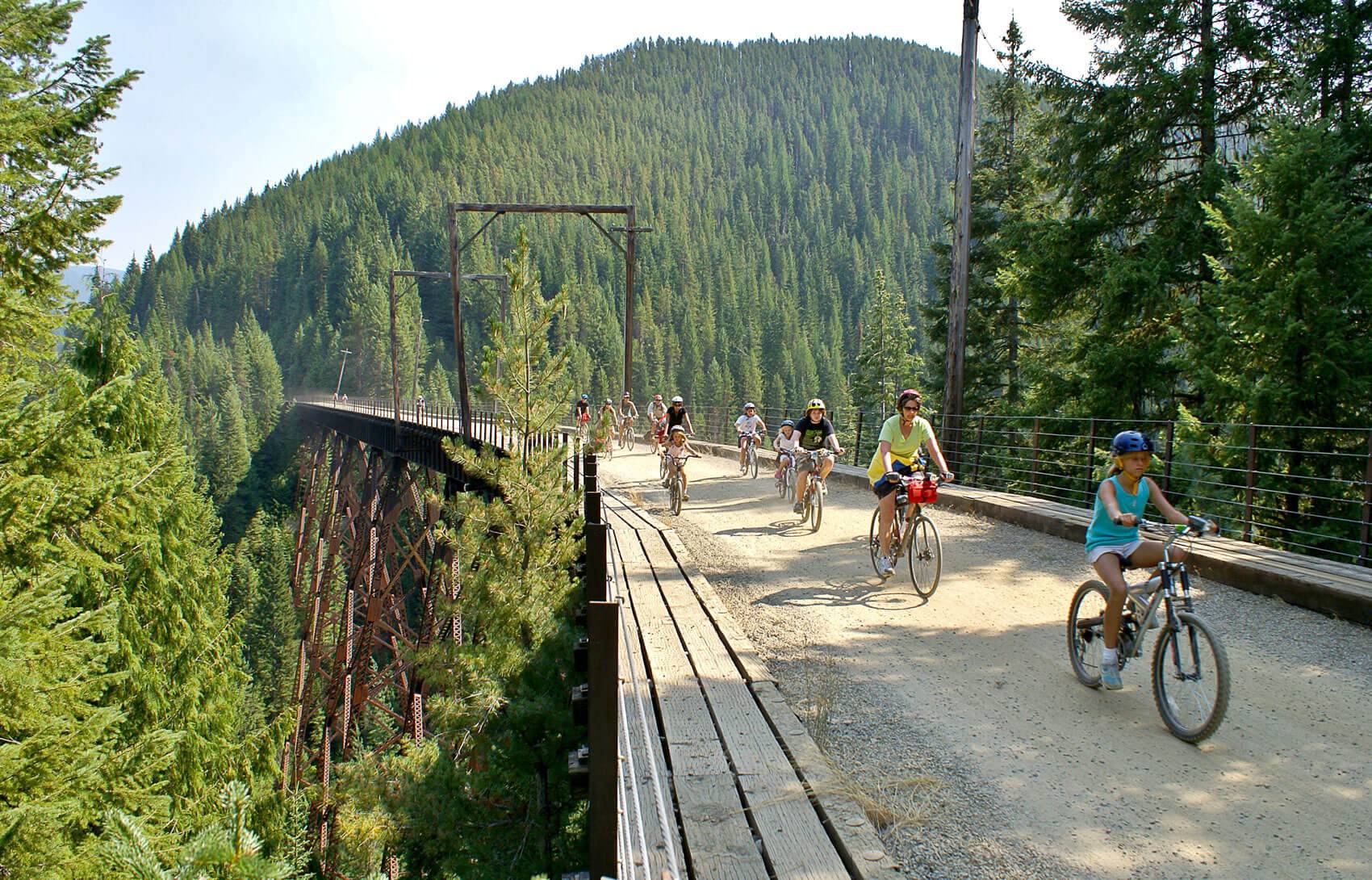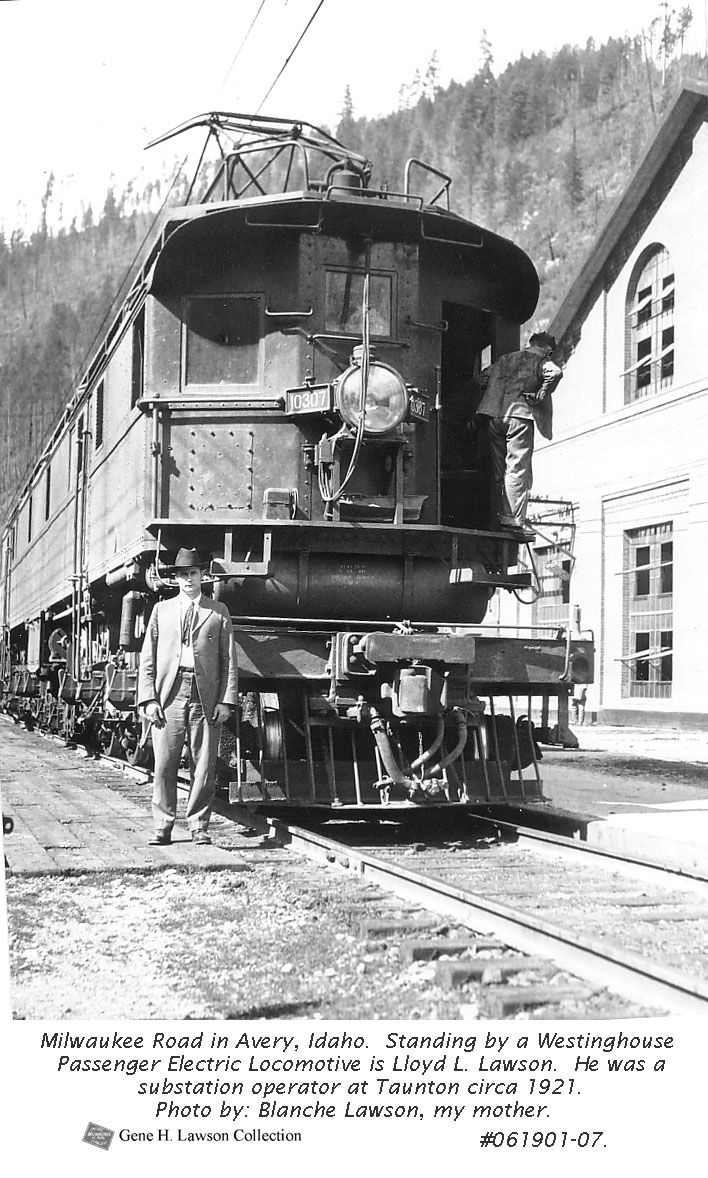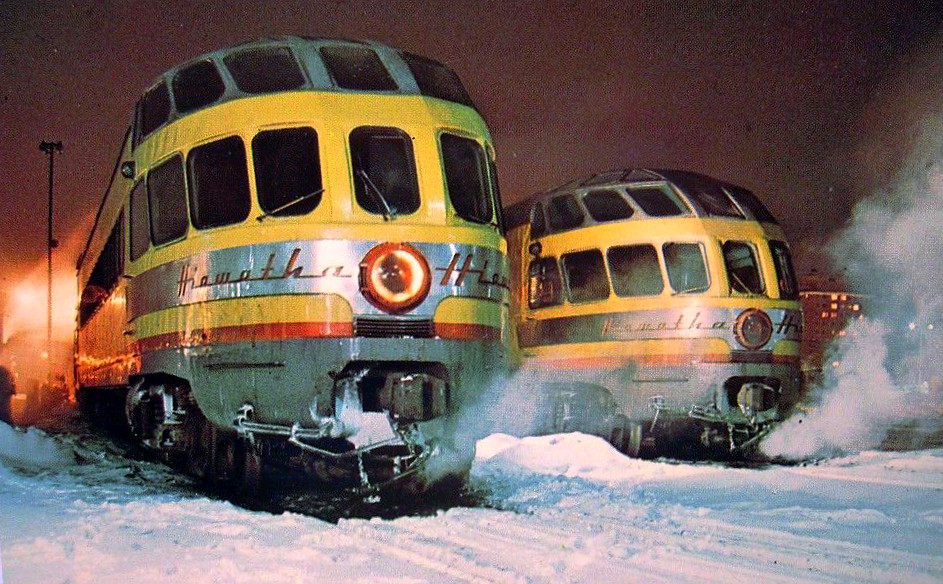Milwaukee Road's Pacific Extension: America's Longest Abandoned Railroad
Milwaukee Road's Pacific Extension might very well be the most famous, or infamous, abandoned right of way in the United States, and it is undoubtedly the longest, although short stretches of the railroad are still in use. Combined, it is one of the world's longest abandoned railways, and the incredible terrain that it crossed means that even long after it ended service, it is still being documented and reused as part of numerous trails.
It was one of the first lines I traced, seeing it on abandonedrails.com, and immediately being curious about it. Today we go in depth into exploring this abandoned rail line, and what it looks like today.
 |
| Map of the Milwaukee Road's Electrified Pacific Extension via: TrainWeb.org |
Aside from its length, the road traveled some of the most beautiful terrain in this country, and much of the disused right of way is now rail trails, such as the Route of the Hiawatha, or the trail formerly known as the John Wayne Pioneer Trail. I've discussed the Route of the Hiawatha as one of the best travel destinations of abandoned railroad corridors in the United States, and I'm hopeful I'll be able to visit it myself soon enough!
 |
| A bridge on the Route of the Hiawatha Bike Trail Image: Visit Idaho |
The story of the Pacific Extension began in 1901 when the Milwaukee Road management felt an extension to the Pacific Northwest was the only way to remain competitive with its competitors, such as the Northern Pacific and the Chicago & Northwestern.
The line was constructed between 1906 and 1909 and was built to provide a direct rail link between the Midwest and the Pacific coast, bypassing the congested rail hubs of the west. The line was also intended to help the Milwaukee Road compete with other railroads that were already established in the region.
Despite a cost in the millions (billions today), and only an 18 mile savings from its nearest competitor, the project was completed in 1909. The opening of the line represented the railroad’s first foray into the Pacific from the Midwest, finally realizing the "Pacific" in the company's full name, the Chicago Milwaukee St. Paul and Pacific Railroad. It was also the first time a direct Seattle to Chicago route had been built, as the previous two railroads ended at the Twin Cities.
It was built to compete with the Great Northern Railway and the Northern Pacific, and while the Pacific Extension saved a few miles off of the trip from the Midwest to the west when compared to the main lines of the other railroads, it did so at very significant right-of-way costs.
 |
| Image via NTS Greenway |
Many celebrate the building of 10 miles of track in a single day by the Central Pacific as an engineering marvel, but building 2,300 miles of track by the Milwaukee across two mountain ranges in only three years has to be recognized as well. The Pacific Extension was known for its difficult terrain and harsh weather conditions, as it crossed rugged mountain ranges and rolling prairies. Despite the challenges, the line was considered a feat of engineering, as it utilized tunnels, bridges, and other innovations to traverse the rugged landscape.
 |
| Milwaukee Road Freight Train Crossing Hansens Creek Bridge in the Cascades. Milwaukee Road Owned Photo. Kaufmann & Fabry Co. Commercial Photographers. 1950 (FRRandP Photo Collection) |
One of these was the uncommon electrification of a freight railroad in the United States. The route was electrified in full by 1916, which allowed for operation even in the harsh Montana winters, where temperatures as low as -40 impacted steam engines along the route.
 |
| Two Skytop Lounges in their second Milwaukee Road paint scheme. These cars were part of the Twin Cities Hiawatha equipment pool. Image: Jim Boyd |
Despite the engineering marvels and completion of the investment, the Pacific Extension faced significant financial difficulties and was never able to compete effectively with other railroads in the region.
The Pacific Extension left the Milwaukee Road in a debt it was unable to pay, even when freight traffic was plentiful. It was simply a case of too many competing railroads, many of whom were merging to stay alive. Mismanagement would also pay a role in the downfall of the company, and in the late 1970’s, it filed for bankruptcy.
Part of the bankruptcy included the abandonment of the entire Pacific Extension from Terry, MT to Renton, WA, over 1100 miles, making it the single largest abandonment in American History. By 1980, the Milwaukee would go into bankruptcy, where its assets were acquired by the Soo Line. Almost the entirety of the line was abandoned in 1980, and much of the right-of-way has since been converted into recreational trails.
Other railroads would buy sections of the Pacific extension, but the vast majority was abandoned. Most of what remains in service today is owned by the BNSF Railway or the Canadian Pacific Railway. I've identified six of these corridors that made up the Pacific Extension:
i) Terry to Miles City, MT - 39 Miles
i) Terry to Miles City, MT - 39 Miles
ii) Miles City to Butte, MT - 395 Miles (the longest continuous stretch of abandoned right of way in the US).
iii) Silver Bow to Rocker, MT - 74 Miles
iv) Bearmouth, MT to Riverdale, ID - 213 Miles
v) Plummer, ID to Warden, WA - 134 Miles
vi) Smyrna to Renton, WA - 155 Miles
 |
| Jon Severson photo, 2016. Severson's photographs have documented a significant portion of the Pacific Extension's post-abandonment life in truly amazing fashion! |
For more on the Milwaukee Road, I suggest reading The Milwaukee Road to the Pacific Northwest: Photography of John W. Barriger III via eBay and Amazon. (Clicking on those links may earn this site a commission).
Thanks as always for reading!



Comments
Post a Comment